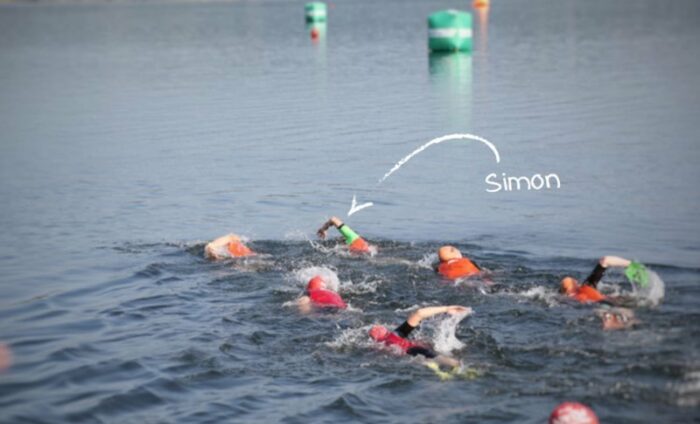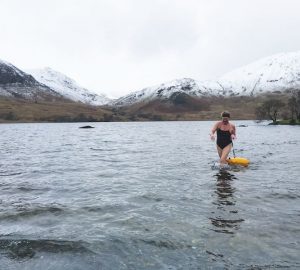
View from the water – Swimrun tips for swimmers
Simon Griffiths shares a few swimrun tips for swimmers
A few years ago, Ötillö was an obscure extreme adventure sport with a strange looking name dreamed up by a couple of mates after a few too many beers. But the concept of travelling from one point to another, over land and water, using only your legs and arms, was much too much fun for the Swedes to keep to themselves. There are now swimrun events all around the world, with more appearing each year.
At Outdoor Swimmer, we deliberately keep triathlon coverage to a minimum. Also, we feel the approach people have to triathlon is very different to outdoor swimming. Triathlon is performance orientated while swimming celebrates participation and personal challenge.
Swimrun is different. For a start, it’s much more swimmer friendly than triathlon. With a swimrun, you could easily spend between 25 and 50% of your time in the water compared to less than 10% in triathlon. Then, as there are multiple swims in swimrun, as a swimmer you get chances later in the race to catch up. But the main reason we like swimrun is because the philosophy behind it is much more closely aligned to an outdoor swimmer’s approach to sport than a triathlete’s. Although swimruns (like mass participation swims) are nominally races, they are really personal endurance challenges, usually in beautiful natural locations. The accomplishment is to finish and, like in swimming, the time is secondary. I’m sure it’s a sport that’s going to grow and grow. I’d really recommend giving it a go. If you do, I hope the following helps:
DON"T BE FOOLED BY THE RUN
Running in swimrun is both easier and harder than you think. You cannot do swimrun on your swim fitness alone (I know, I’ve tried). You need to practise running. On the other hand, you get beautiful trails to distract you from the effort and, best of all, breaks where you can swim and cool off.
USE THE SWIM AS A RECOVERY
The difference between a relaxed cruising pace and a threshold pace swim is probably only a few seconds per 100m, whereas your threshold running pace might be 30 seconds to a minute or so per kilometre faster than your recovery pace. As a swimmer, relax and recover on the swim and push the run.
IT'S MORE IMPORTANT TO BE CLOSELY MATCHED TO YOUR PARTNER ON THE RUN THAN THE SWIM
Swimruns are usually done in pairs. Ideally you want to be closely matched in speed to your partner for both the swim and the run. But, if you have choice, it’s better to be matched for running. This is because you can use a tether in the water and the stronger swimmer can pull the weaker.
MAKE YOUR OWN DECISIONS ON PADDLES AND PULLBUOYS
The majority of people in swimrun use paddles and a pullbuoy but these are not compulsory kit. If you are going to use them, make sure you train with them and test your speed as you fatigue. As for the pullbuoy, remember you will already have buoyancy from your wetsuit and shoes and calf guards if you wear them. You may find that’s enough already.
Simon Griffiths is the founder and publisher of Outdoor Swimme. Email Simon at: simon@outdoorswimmer.com








